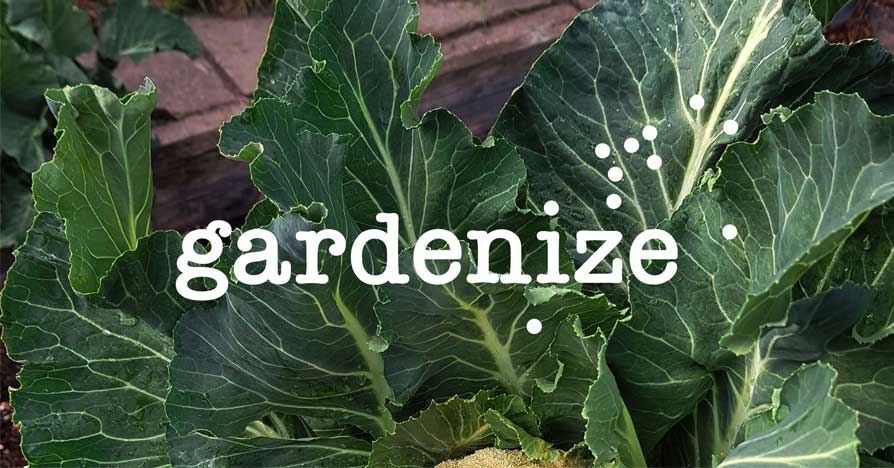Upside-down gardening: April in Central Otago
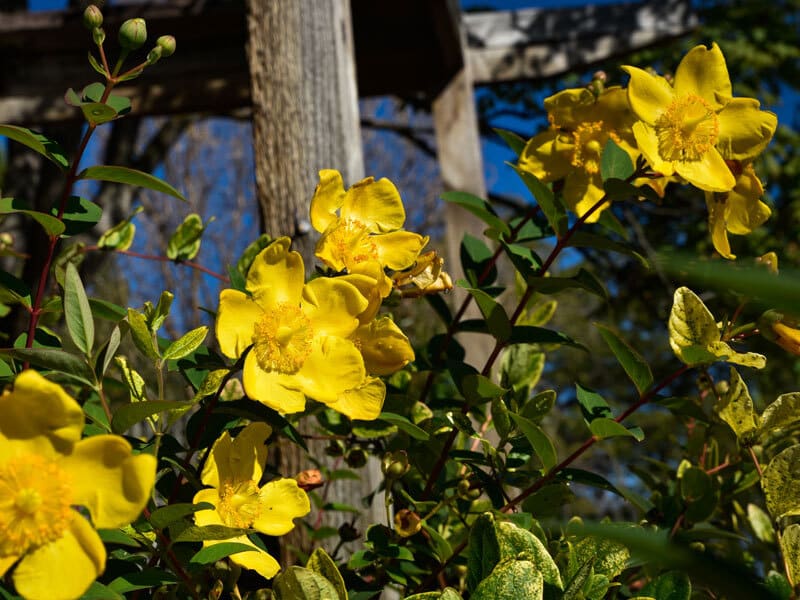
Autumn colour
Flowers: how to fill a colour gap and easy to grow, self-seeding annuals.
In the vegetable garden: tomatoes and easy to grow oriental vegetables, plus jobs for April.
Autumn is a particularly beautiful time of year in Central Otago: time to harvest vegetables, clean up the borders and plan for next year.
Keeping the colour going
Our garden, unlike others in the area, has hit a slight colour gap. I’m waiting for the chrysanthemums and Michaelmas daisies to flower and looking at other gardens to see what looks beautiful right now so that I can plan better for next year. In the meantime, I don’t have any sunflowers, but the yellow hypericum against the blue sky makes a courageous statement.
Bedding plants
One thing you can do to fill a colour gap is to buy bedding plants. I cheered up this little spot with some busy lizzies (impatiens). They come in red, a lovely shimmery white or any shade of pink, including salmon. Red works brilliantly when you want vibrant colour, because there is always green in the garden. Since red and green are on opposite sides of the colour wheel, you are guaranteed to benefit from the pairing of complementary colours. Before I planted these, I took a few cuttings in the hope that I can keep them going on the windowsill over winter as houseplants.
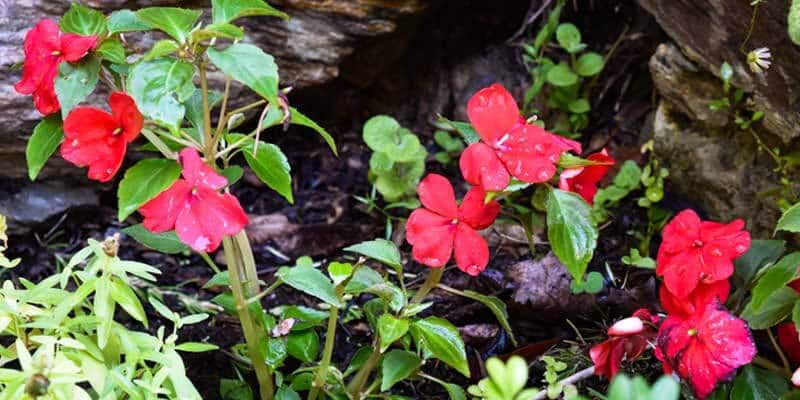
Planning for next year’s late summer/early autumn colour
I’ve been looking around at gardens nearby and thinking about what I could plant to avoid a colour gap next year. Japanese anemones do well here, in fact, some people complain that they can become invasive. You can get them in white or pink, double or single. I photographed some in a friend’s garden: Monte Christo, where I got married last year. I think they would look fantastic in the rhododendron bed, where I am also building up a small collection of geraniums in pink, white and blue. I hope that when the geraniums have finished their main flowering and I have cut them back to neat little hummocks, the Japanese anemones can take over, perhaps with frothy ammi to soften the picture.
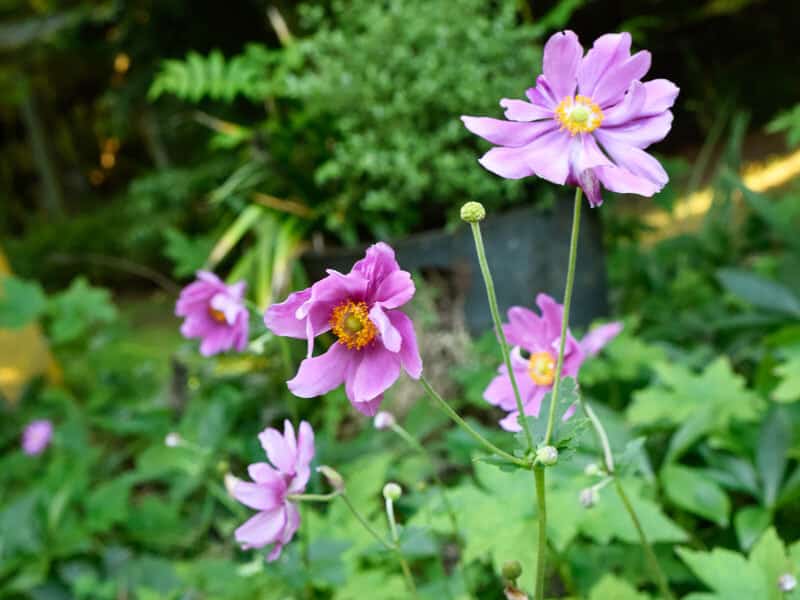
Self-sown stalwarts
When your best-laid plans go awry, nature steps in to help out with reliable, self-seeding annuals. They seed themselves around so once they arrive in your garden, they will always be there. All you need to do is leave them alone and don’t be too keen to tidy away spent flowerheads.
Dainty violas
These little treasures flower almost all year. They’re among the first to flower in spring and the last to finish flowering in autumn. Less showy than pansies, with smaller flowers, they still have those whiskery little faces and they’re edible. You can buy trays of them as low-priced bedding plants or raise them from seed. Their seedlings hardly ever put themselves in the wrong place, but if you find a little stray, it’s easy to pull it up, make a little hole with a stick and push it into the ground where it will look good and produce more seedlings.
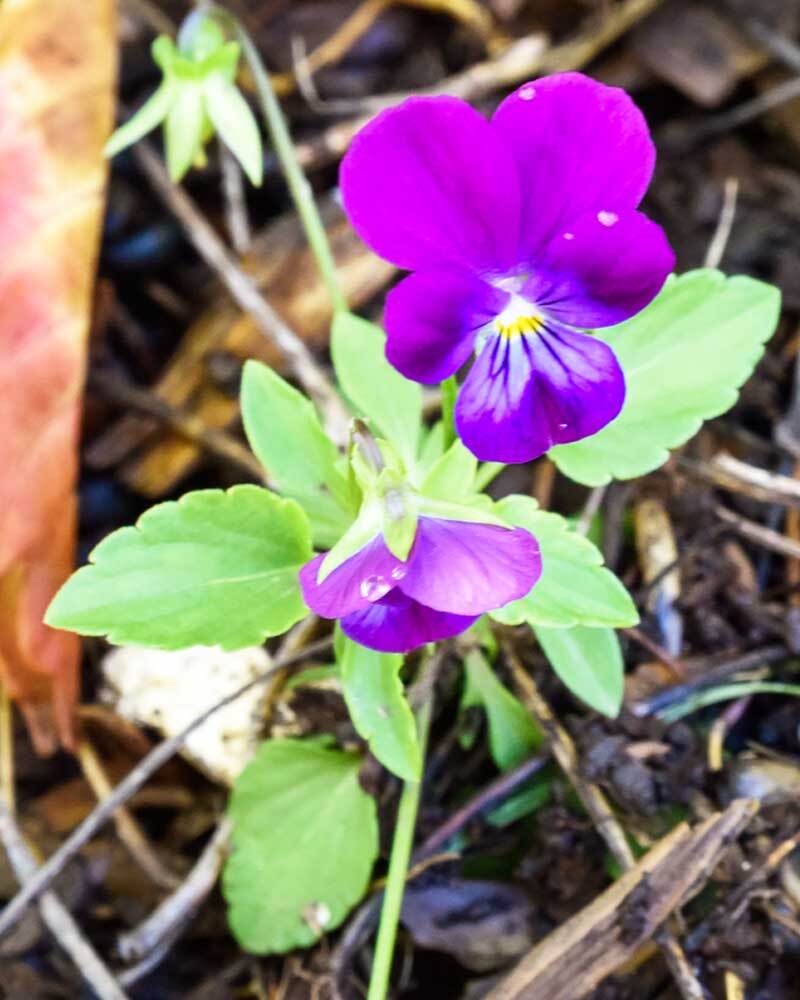
Alyssum and snapdragons
Alyssum and snapdragons (antirrhinums) are in most of the gardens around here because they are just so easy to grow. They’re perfectly happy in poor soil and you’ll see them growing out of the tiniest cracks in the rocks. You might just give the snapdragons a hand by cutting off the seedheads and throwing them down on the ground where you would like to see snapdragons in the future, especially if you would like a nice supply of cut flowers for the house. Alyssum is brilliant for filling gaps between larger plants. It will crowd out some of the less persistent weeds and the soil benefits from being well covered.
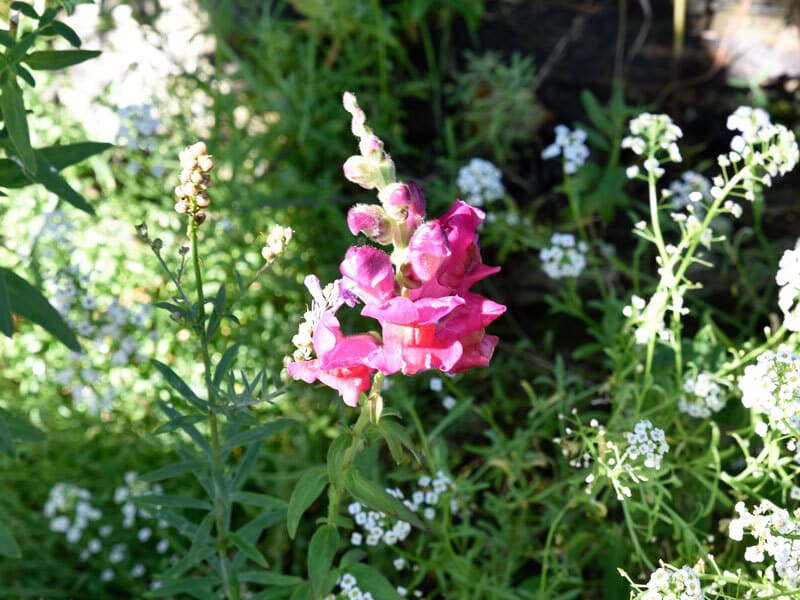
Plentiful tomatoes
My tomatoes are thriving around the compost bin, but they are a little late to ripen. This has happened before and I still got a good crop, some of which ripened in bowls in the kitchen, while some became green tomato chutney. Before the minimum temperature falls to zero, they’ll have to be stripped out. Next year, I plan to raise my seedlings in mid-November, along with aubergines, chillies and tons of delicious basil.
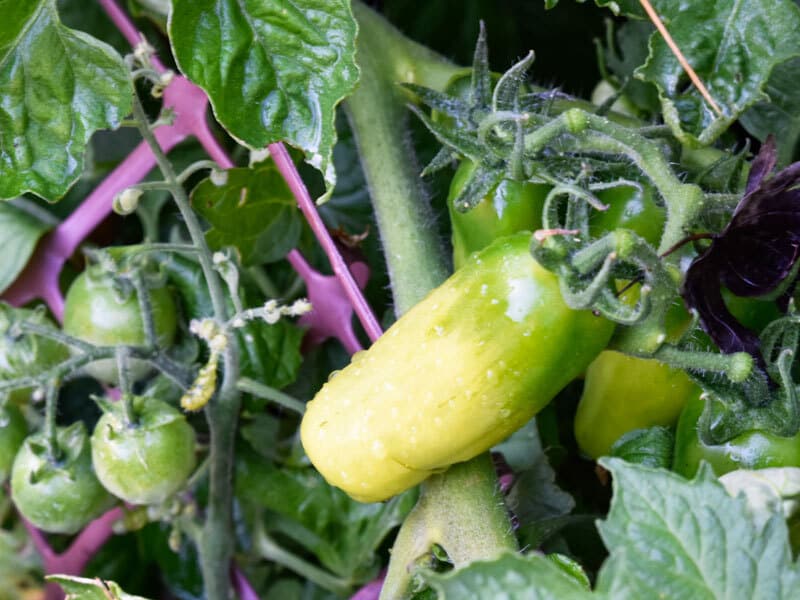

Easy, quick oriental vegetables
I recently had the opportunity to rescue a small part of the garden, about a metre square, that had been neglected and overrun with weeds. I gave it the cardboard treatment: I roughly levelled the soil, then placed cardboard on top to exclude the light from weed seeds and roots remaining in the soil. I then covered this with a couple of inches of coir and sand. Now, the bed is supporting a small crop of pak choi and tat soi, which I planted into the coir. I also planted a few spring onion seedlings and scattered carrot seeds to take over when greens have been eaten. I’m now raising some kailaan seedlings: something I’ve never grown before. Most of the oriental vegetables are brassicas. They tolerate cold weather and are satisfying to grow because they germinate easily and develop very quickly. They’re delicious in a stir-fry, needing only a few seconds to cook. In hot weather, they may bolt. That’s not a problem though. Just harvest them early. They’ll still be tender if you cook them before the flowers are fully formed.
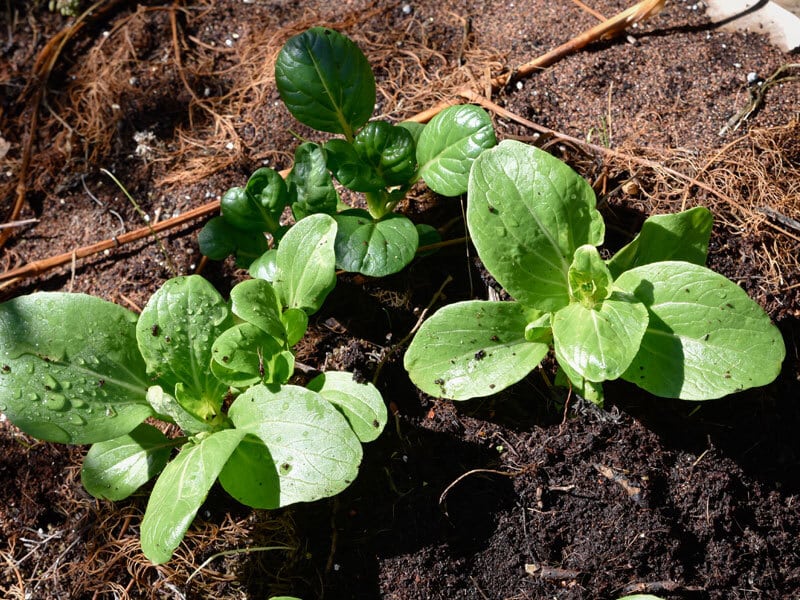
Jobs to do in the garden in April
Keep going with the autumn clean-up: short bursts of intensive weeding, pruning lavender, rosemary and bay and splitting up and moving large perennials. It’s good to get the pruning done before growth stops completely, so that the plant does not face the winter with fresh wounds. Similarly, large perennials will do better if they get a little bit of gentle weather so that they can settle in before they go dormant.
Reduce the irrigation further.
Don’t worry about leaves from the trees falling on flowerbeds. The leaves are brilliant for the soil. Any leaves that fall on paths or on the lawn can be gathered up and fed to the worm farm. Alternatively, put them in a black plastic bag, add a little water and hide them behind a bush. In about twelve months they will turn into leaf mould, which is a very good soil improver.
For the vegetable garden, sow seeds of beetroot, broad beans, Brussels sprouts, lettuce, pak choi, parsley, radishes, shallots and spinach. I find that autumn sowings of broad beans do particularly well. They stand over the winter and then put on a real spurt of growth in early spring to provide beans early in the season. I’ll be sowing my broad beans direct and supporting them loosely with a network of strings tied around 10-15 cm sticks.

ABOUT THE WRITER
My name’s Pamela and a few years ago, at the age of 55, I made the decision to start a new adventure. I left the northwest of England, where I had lived all my life, and moved to New Zealand. I’m excited to be a guest blogger on Gardenize, and I love writing about my garden in beautiful, sunny Alexandra in Central Otago. My garden here is about as different as it could get from the damp, shady garden I left behind. Central Otago is the hottest, driest, coldest area in New Zealand, as we have hot summers and cold winters, along with a semi-arid climate. The area is famous for its orchards and vineyards. It has many quaint little rural townships with pretty cottage gardens featuring peonies, bearded irises, hollyhocks, lilies, roses, and lavender that grow so well here. The landscape is spectacular, with dry, rocky mountains and impossibly blue lakes and rivers. The dry mountains look barren, but they’ve actually covered in tough little thyme plants: a great clue to what might grow well in the garden.
GARDENIZE GARDEN APP
A gardening friend with a green thumb and photographic memory
Gardenize is an app for gardening and cultivation that helps you to overview, understand and develop your garden and your gardening skills.
Order makes it easier to succeed and Gardenize structures information and photos and makes it searchable for you. You also get tips and inspiration from other Gardenizers around the world.
Gardenize is free to use and you can download Gardenize from the App Store or Google Play, or create an account the Gardenize web app for web browsers.
Get to know Gardenize better here.

